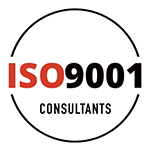Implementing ISO 9001 can greatly improve a company’s quality management system, ensuring that customer needs are consistently met and operations are streamlined. This international standard provides a framework for enhancing quality and processes, making it beneficial for businesses of all sizes.
Taking the first steps in implementing ISO 9001 involves a strategic approach that balances planning, resource allocation, and employee engagement. Understanding the essentials of the implementation process sets the groundwork for establishing a robust system that complies with international standards and fosters growth and innovation. Through ongoing monitoring and a commitment to continuous improvement, businesses can ensure lasting and meaningful benefits from their ISO 9001 journey.
Understanding the Core Principles of ISO 9001
ISO 9001 is based on several fundamental principles designed to improve business processes and enhance customer satisfaction. One key principle is customer focus. This involves understanding customers’ current and future needs and working to consistently meet these. Businesses should aim to exceed customer expectations, leading to greater loyalty and increased sales.
Leadership is another crucial principle, emphasising the importance of strong, unified direction and purpose. Leaders create conditions for people to engage in achieving quality objectives. Involving employees at all levels ensures everyone contributes to the organisation’s success.
The process approach focuses on managing activities and resources as a cohesive process, improving efficiency and effectiveness. This principle enables businesses to identify and manage interrelated processes, resulting in better resource utilisation and lower costs.
Improvement is a constant in ISO 9001, encouraging an ongoing focus on enhancing processes. This principle drives companies to adapt and refine methods to maintain responsiveness to market changes.
Evidence-based decision-making ensures actions are taken based on reliable data. Fact-based decisions lead to a better understanding of the processes, resulting in improved choices. Lastly, relationship management promotes mutually beneficial relationships with suppliers and partners, enhancing the ability to create value together.
These principles provide a structured framework to develop a robust quality management system (QMS), guiding businesses in delivering consistent quality and driving continuous growth.
Initial Steps for Successful ISO 9001 Implementation
Starting the ISO 9001 implementation journey requires careful planning and execution. Here are the essential initial actions to consider:
1. Understand the Standard
Familiarise yourself with the ISO 9001 requirements. This involves studying the standard and identifying how it applies to your business processes.
2. Gain Leadership Support
Secure commitment from top management. Leadership support is vital for allocating resources and driving the initiative. Communicating the benefits of ISO 9001 implementation helps in gaining buy-in.
3. Conduct a Gap Analysis
Assess your current processes against ISO 9001 requirements. A gap analysis highlights areas for improvement and provides a baseline for planning the necessary changes.
4. Develop an Implementation Plan
Create a detailed plan identifying the steps, timelines, and responsibilities for the implementation process. This plan should include training employees and revising documentation.
5. Allocate Resources
Ensure adequate resources are available for implementation. This includes financial support, personnel, and necessary tools or training programs.
Management commitment is pivotal as it reflects the organisation’s dedication to quality and continual improvement. Aligning resources and the workforce towards a common goal becomes challenging without strong leadership.
By following these steps, businesses can lay a solid foundation for ISO 9001 implementation. This preparation phase is crucial to ensure a smooth transition towards a comprehensive quality management system that benefits the entire organisation.
Developing Your Quality Management System
Creating a robust Quality Management System (QMS) involves documenting processes and setting clear quality objectives. Start by outlining the key processes across your business. Document these processes to ensure consistency and ease of training for new employees. This documentation should be clear, concise, and accessible, allowing employees to follow standard procedures easily.
Set specific, measurable quality objectives that align with the organisation’s goals. These objectives guide the daily operations and help staff understand the overall aim. Regularly reviewing these objectives ensures they remain relevant and achievable as the business grows.
Engaging employees is vital for fostering a culture that values quality. Involve team members in developing and refining the QMS. Encourage open communication and feedback, making employees feel their input is valued. Workshops and training sessions can instil a quality-focused mindset and provide the skills needed to meet objectives.
Reward and recognise employees who contribute to quality improvements. This boosts morale and reinforces the importance of striving for quality in every aspect of their work. By nurturing an environment that prioritises quality, you empower your team to contribute to the success of the QMS actively.
Monitoring and Continuous Improvement
Monitoring is an ongoing process key to maintaining ISO 9001 standards. Regular audits and reviews of your QMS ensure that processes are followed and objectives are met. This monitoring helps identify areas where the system might deviate from the standards, allowing for prompt corrective actions.
Using audit results effectively involves analysing findings and implementing recommendations. After each audit, hold team meetings to discuss the outcomes and any necessary improvements. Focus on creating an action plan that addresses weak points without disrupting daily operations.
Feedback from customers and employees is equally valuable. Encourage inputs on how services or processes can improve. This feedback provides insights from different perspectives, helping you tailor improvements to fit real-world needs.
Embrace the philosophy of continuous improvement by reviewing processes regularly. Implement small changes incrementally to enhance efficiency and quality over time. Celebrate successes and learn from failures as you adapt. This approach maintains a dynamic QMS that evolves with your business needs.
Conclusion
Implementing ISO 9001 is a powerful step towards enhancing a business’s quality management system. Organisations build a framework that supports consistent and high-quality output by understanding the core principles, taking strategic initial steps, and developing a comprehensive QMS. Monitoring and fostering a culture of continuous improvement ensure that the system remains effective and relevant.
The benefits of adopting ISO 9001 are numerous. They include greater customer satisfaction, improved process efficiency, and a strong reputation for quality. By investing effort at each implementation stage, businesses create a sustainable system that aligns with their goals and drives long-term success.
Looking to elevate your business’s quality management process? ISO 9001 Consultants can guide you through every step of your ISO 9001 journey. From initial planning to ongoing monitoring, we offer expert advice and tailored solutions for the implementation of ISO in Sydney. Reach out today and see how our services can help you achieve excellence and ensure your business meets international standards.








Users Comments
Get a
Quote